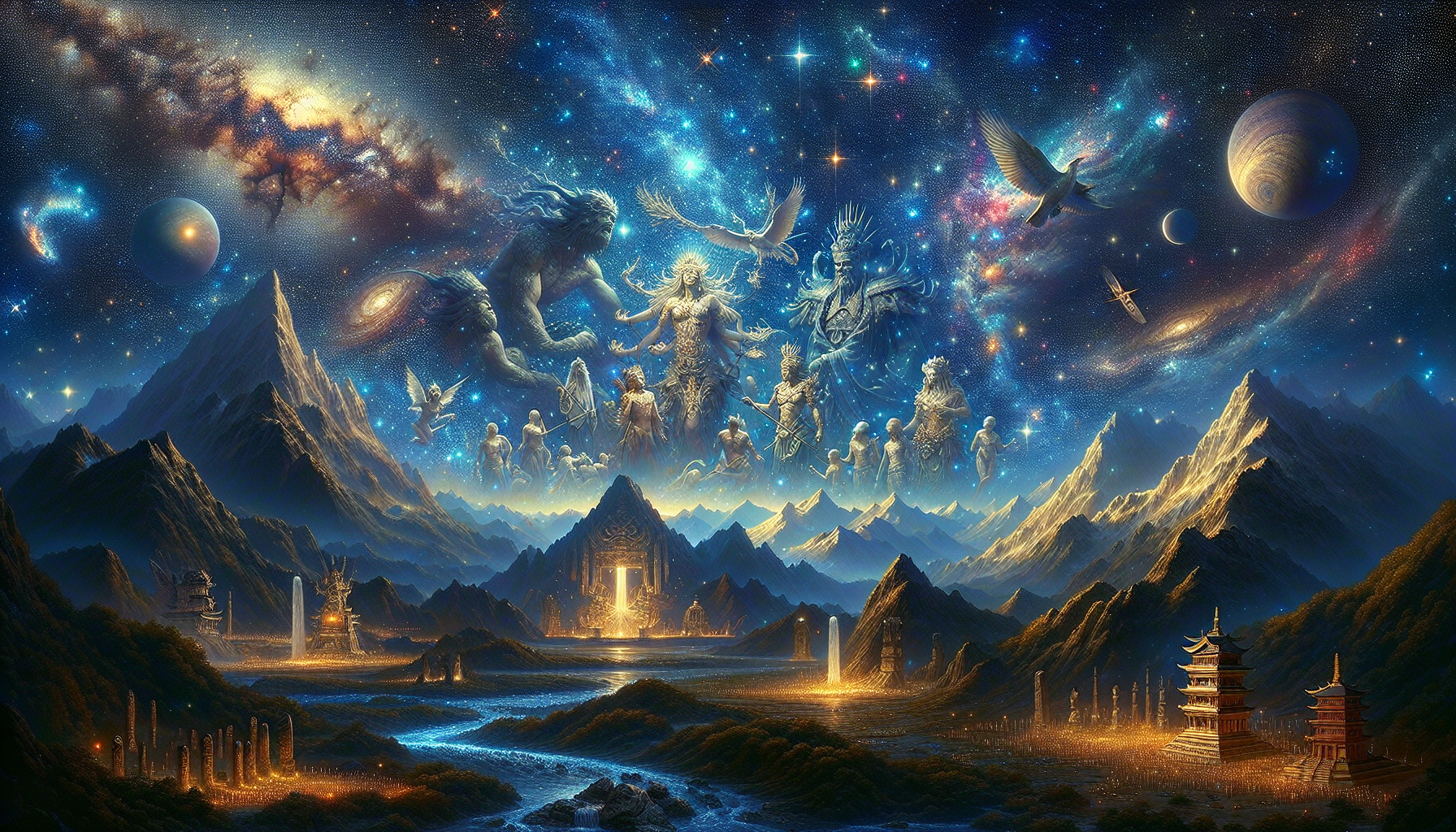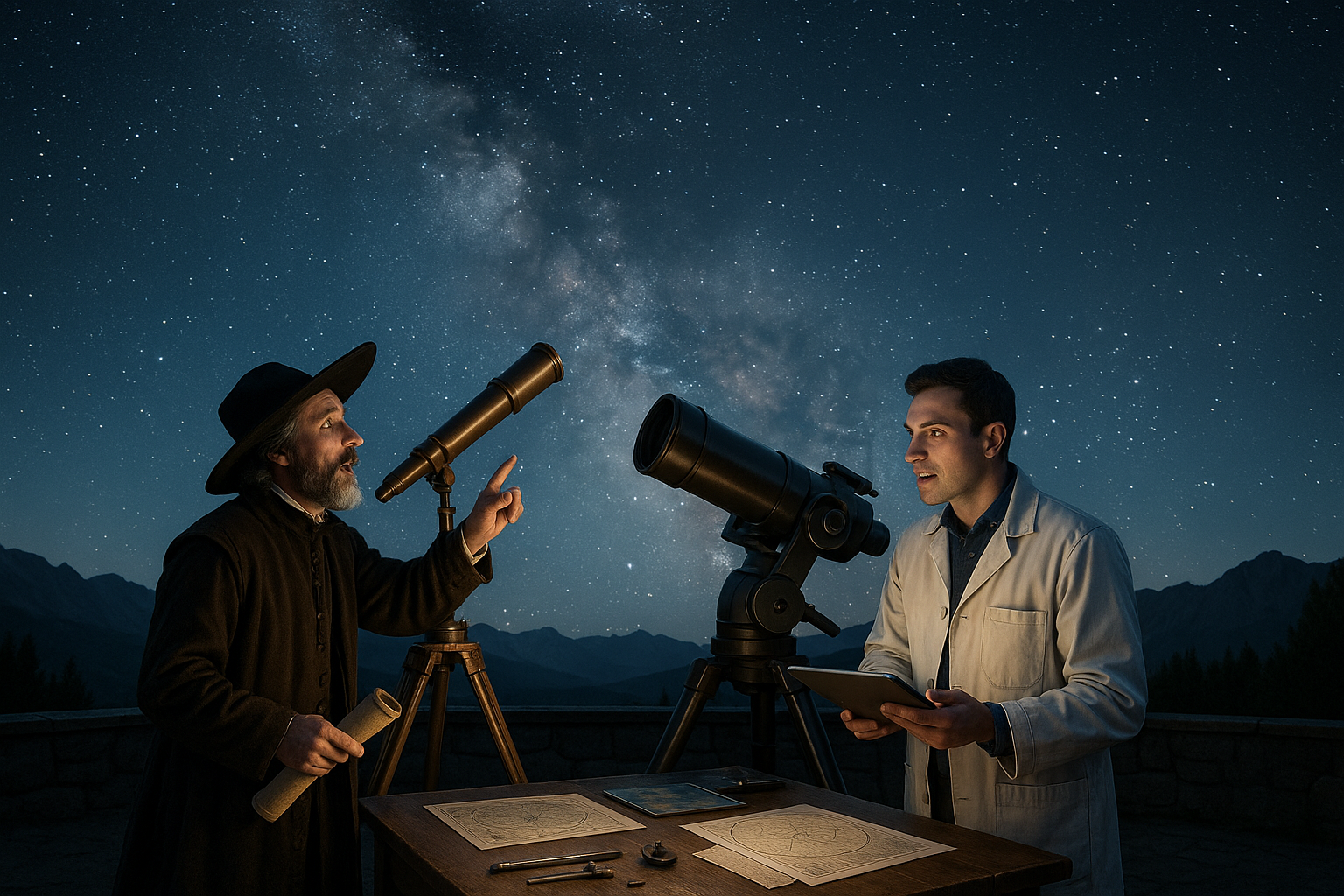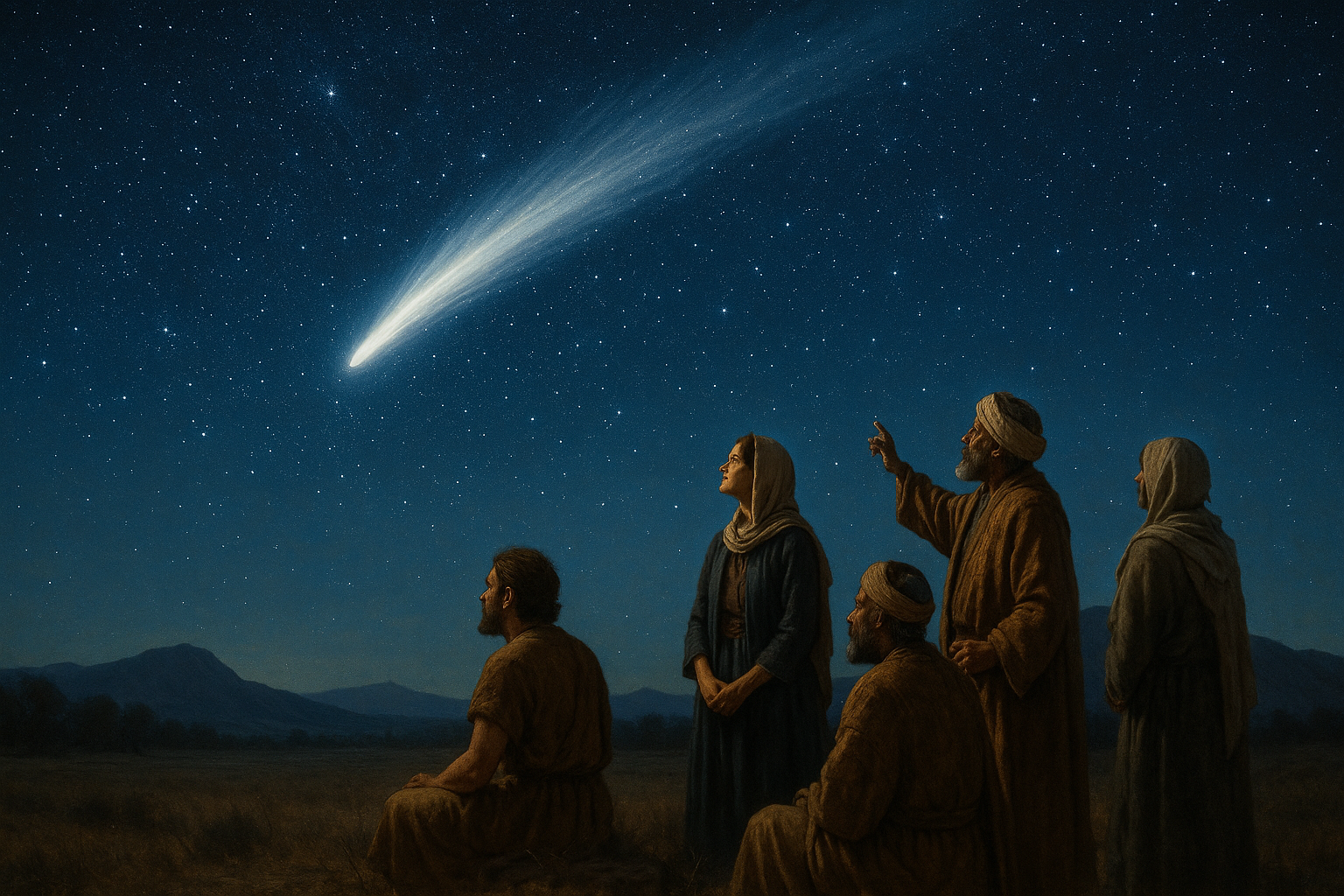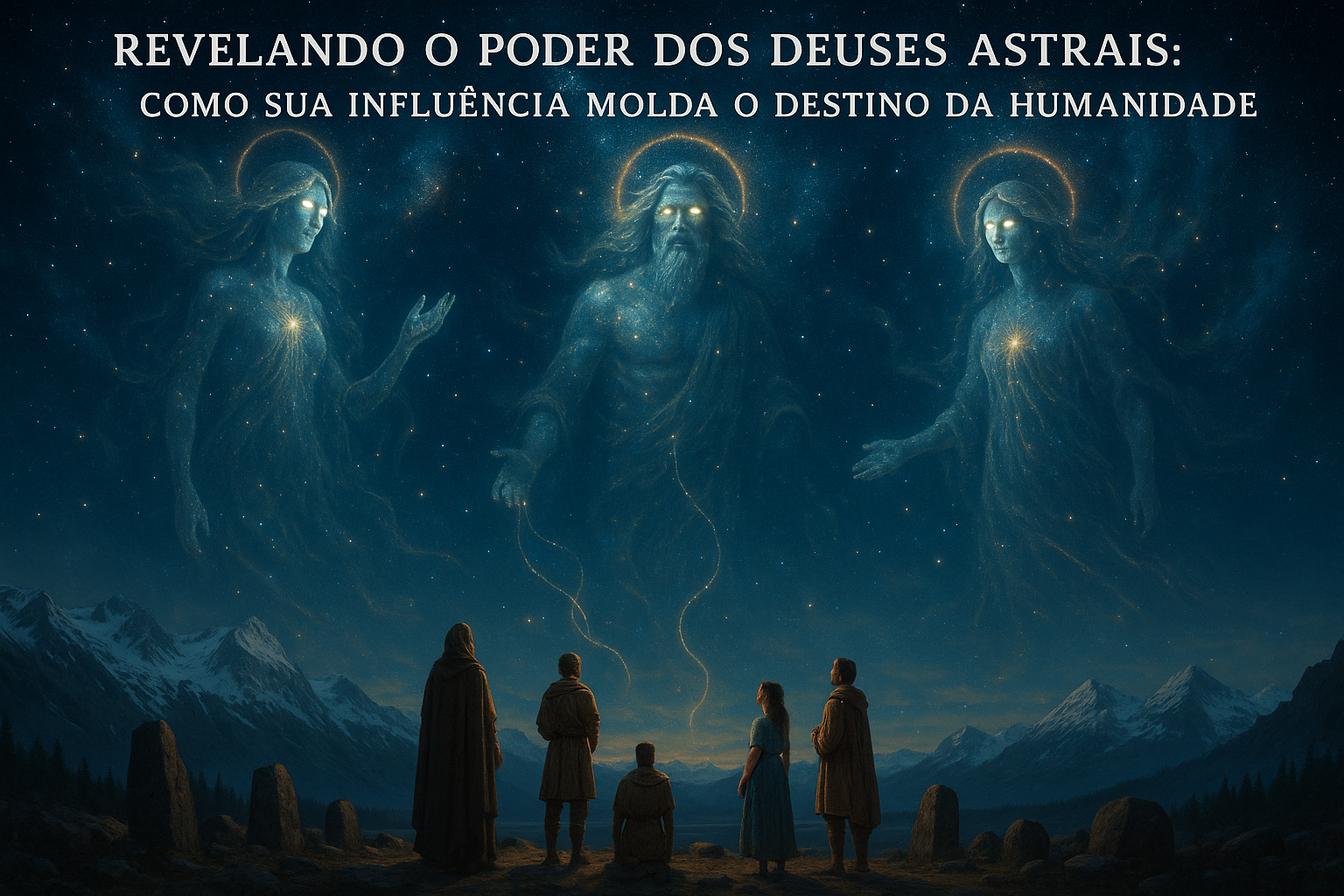Throughout human history, the night sky has served as a canvas for imagination, a source of wonder and a trigger for some of the most profound questions about existence. As people gazed upward at the stars, planets, and the vast expanse of the cosmos, they sought to understand their place within this mysterious universe. This curiosity gave birth to a rich tapestry of creation myths—narratives that not only sought to explain the origins of the world but also reflected the values, fears, and aspirations of the cultures from which they emerged. In “Star-Studded Origins: Exploring Creation Myths Linked to the Cosmos,” we embark on a captivating journey through these celestial tales, unveiling the intricate ways in which different civilizations have interpreted the beginning of everything. ✨
From the ancient Egyptians, who envisioned the sky as a goddess arching over the earth, to the Norse, who imagined the cosmos as a great tree with roots and branches connecting various realms, creation myths offer a window into how early societies understood their universe. These stories are not mere flights of fancy; they are profound reflections of the human experience, illustrating how cultures have historically sought to make sense of the natural world and their existence within it. They provide insight into the human condition, revealing our innate desire to connect the dots between the earth and the heavens, to see patterns in the stars, and to find meaning in the cosmic dance above.
In this exploration, we will delve into several captivating creation myths, each linked by their celestial themes yet distinct in their cultural nuances. We will journey to ancient Mesopotamia, where the Enuma Elish narrates the battle between gods that led to the creation of the world. We’ll traverse the vast expanses of the Pacific Ocean to discover how the Māori people of New Zealand envisioned their origins, with sky father Ranginui and earth mother Papatuanuku locked in a loving embrace until their children forced them apart to create the world. Our voyage will also take us to the Indian subcontinent, where the Rigveda hymns recount a cosmic egg from which the universe was born—a testament to the cyclical nature of time and existence.
Moreover, we will examine how these myths, while rooted in ancient traditions, continue to influence modern culture and thought. Whether through literature, art, or film, the themes and archetypes from these celestial origin stories persist, reminding us of the enduring human fascination with the stars and the stories they inspire. We will discuss how contemporary interpretations and adaptations keep these myths alive, offering new perspectives and insights while honoring their timeless essence. This section will illuminate the dynamic interplay between ancient narratives and modern creativity, demonstrating how the mysteries of the cosmos continue to inspire and challenge us.
Join us on this odyssey as we explore the star-studded origins of creation myths, weaving through the stories that have shaped our understanding of the universe. Whether you are a lover of mythology, a seeker of knowledge, or simply curious about the ways in which humanity has sought to explain the cosmos, this exploration promises to ignite your imagination and expand your appreciation for the rich tapestry of human thought. Together, we will uncover the common threads that bind these myths across cultures and eras, and discover the universal truths they reveal about our shared quest for meaning in the vastness of the universe. 🌌
Introduction to Cosmic Creation Myths
The universe has always captivated human imagination, and throughout history, civilizations across the globe have attempted to explain the origins of the cosmos through elaborate myths. These creation myths, often filled with gods, celestial beings, and cosmic battles, provide fascinating insights into how different cultures perceived the universe and their place within it. The exploration of these myths not only reveals the rich tapestry of human imagination but also highlights the shared human desire to understand the mysteries of existence.
The Role of the Cosmos in Mythology
Creation myths often begin with the void, a primordial nothingness from which the universe emerges. The cosmos is frequently personified as a god or goddess, emphasizing its centrality in the act of creation. In many cultures, celestial bodies such as the sun, moon, and stars are not just physical entities but divine beings with immense power and influence. This celestial emphasis reflects the importance of the sky and its phenomena in the lives of ancient peoples, who depended on the stars for navigation, agriculture, and the measurement of time.
Comparative Analysis of Cosmic Creation Myths
To delve deeper into this subject, let’s compare a few creation myths from different cultures. The following table provides an overview of these myths, highlighting the central figures, cosmological events, and the role of celestial bodies.
| Culture | Creation Myth | Cosmic Elements |
|---|---|---|
| Greek | Chaos, Gaia, and Uranus give rise to the Titans and Olympian gods. | Earth (Gaia), Sky (Uranus), and Chaos as primordial entities. |
| Hindu | Vishnu creates the universe from his navel, Brahma emerges on a lotus. | Cosmic ocean, lotus flower, and celestial Vishnu. |
| Norse | Ymir, the giant, is slain, and his body forms the world. | Cosmic cow Audhumla, Ymir’s body as the world. |
| Mayan | The gods create humanity from maize, after failed attempts with other materials. | Celestial movements guiding creation attempts. |
Check out the table above to see how these myths contrast with one another in terms of cosmic elements and deities involved.
Greek Cosmology: The Birth of the Gods
The Greeks envisioned the cosmos as a complex hierarchy of divine entities and forces. Their creation myth begins with Chaos, a void that gave birth to Gaia (Earth) and Uranus (Sky). From their union emerged the Titans, powerful deities that laid the foundation for the cosmos. The most famous of these myths involves the overthrow of the Titans by the Olympian gods, led by Zeus. This cosmic struggle between order and chaos is a recurring theme in Greek mythology, reflecting the Greeks’ understanding of the universe as a dynamic and ever-evolving entity.
The Cosmic Struggle
The cosmic battle between the Titans and the Olympian gods represents the struggle for power and order in the universe. It highlights the Greek belief in a cosmos governed by laws and principles, with the gods acting as enforcers of these cosmic rules. The overthrow of the Titans symbolizes the triumph of order over chaos, a fundamental aspect of the Greek worldview. This narrative also emphasizes the importance of divine hierarchy, with Zeus at the pinnacle, maintaining balance in the cosmos.
The Role of Celestial Bodies
In Greek mythology, celestial bodies are not merely physical objects but divine beings with distinct personalities and roles. The sun god Helios, the moon goddess Selene, and the starry goddess Astraea each play a part in the cosmic order. Their movements across the sky were believed to influence events on Earth, highlighting the interconnectedness of the heavens and the mortal realm. This belief underscores the Greeks’ understanding of the universe as a harmonious system where every celestial event has a corresponding impact on human life.
Hindu Cosmology: The Divine Dance of Creation
Hindu creation myths are characterized by their cyclical nature, reflecting the Hindu belief in the eternal cycle of birth, death, and rebirth. The universe is seen as a manifestation of divine energy, constantly being created, preserved, and destroyed by the Trimurti—Brahma, Vishnu, and Shiva. This cosmic dance of creation is a central theme in Hindu cosmology, emphasizing the impermanence of the material world and the eternal nature of the divine.
The Cosmic Ocean and the Lotus
In Hindu mythology, the cosmos is often depicted as an ocean, symbolizing the boundless potential of creation. From this cosmic ocean emerges a lotus flower, upon which sits Brahma, the creator god. This imagery highlights the interconnectedness of life and the divine, with the lotus representing purity and enlightenment. The lotus is a recurring symbol in Hindu art and literature, embodying the idea of spiritual growth and transcendence amidst the ever-changing material world.
The Role of Vishnu and Shiva
Vishnu and Shiva, along with Brahma, form the divine triad responsible for the cosmic cycle. Vishnu, the preserver, maintains the balance of the universe, while Shiva, the destroyer, facilitates the process of creation by making way for new beginnings. This dynamic interplay between creation and destruction is a core aspect of Hindu cosmology, reflecting the belief in a universe that is constantly evolving and transforming.
Norse Cosmology: The World from a Giant
In Norse mythology, the cosmos is born from the body of a primordial giant named Ymir. This myth reflects the Norse understanding of the universe as a living entity, with the world being an extension of Ymir’s being. The Norse creation story is a tale of transformation, where chaos is molded into order through the actions of the gods.
Ymir and the Creation of the World
According to Norse mythology, the gods Odin, Vili, and Vé slew Ymir, and from his body, they crafted the world. Ymir’s flesh became the earth, his blood the seas, and his bones the mountains. This transformation of Ymir’s body into the cosmos highlights the Norse belief in a universe that is both animate and interconnected, with every element having a divine origin.
The Role of the Cosmic Cow Audhumla
Audhumla, the cosmic cow, plays a crucial role in the Norse creation myth. She nourishes Ymir with her milk and licks the salty ice blocks, revealing the first gods. Audhumla’s presence in the myth underscores the importance of nourishment and sustenance in the cosmic order, symbolizing the life-giving forces that sustain the universe.
Mayan Cosmology: Creation through Trials
The Mayan creation myth, as depicted in the Popol Vuh, presents a universe created through a series of trials and errors by the gods. The Mayans believed that the cosmos was shaped through divine intervention and experimentation, highlighting the dynamic and participatory nature of creation.
The Gods and the Creation of Humanity
In the Popol Vuh, the gods attempt to create humanity from various materials, including mud and wood, before finally succeeding with maize. This narrative emphasizes the importance of maize in Mayan culture, symbolizing sustenance and life. The iterative process of creation reflects the Mayan understanding of the universe as a space of learning and growth, where perfection is achieved through persistence and adaptation.
Celestial Guidance and Order
The Mayans were keen astronomers, and their creation myth reflects the influence of celestial bodies on earthly events. The movements of the sun, moon, and stars guided the gods’ actions, emphasizing the interconnectedness of the cosmos and human destiny. This celestial guidance underscores the Mayan belief in a universe governed by order and harmony, where every action has a cosmic significance.
Conclusion

Conclusion: The Celestial Tapestry of Creation Myths
In delving into the star-studded origins of creation myths linked to the cosmos, we have embarked on a fascinating journey through the tapestry of human imagination and belief. This exploration has illuminated the myriad ways in which ancient civilizations have sought to explain the universe and their place within it, drawing inspiration from the celestial bodies that adorn our night skies. By examining these myths, we have gained insight into the cultural, spiritual, and philosophical frameworks that have shaped human understanding for millennia.
Throughout this article, we first explored the common threads that unite various creation myths across different cultures. From the cosmic egg of Chinese mythology to the Norse Yggdrasil tree connecting the heavens and earth, these narratives reveal a shared human fascination with the stars and their perceived influence on terrestrial life. We then ventured into specific myths, such as the Maori legend of Ranginui and Papatūānuku, which illustrates the intimate connection between the sky and earth, and the ancient Egyptian belief in the sky goddess Nut, who envelops the earth with her starry body each night.
The exploration also highlighted the symbolic significance of celestial bodies within these myths. The sun, moon, and stars are not merely astronomical phenomena but are imbued with divine qualities, guiding human destiny and reflecting the cyclical nature of life and death. This celestial symbolism underscores a profound reverence for the cosmos, as seen in the Hindu Rigveda, which regards the universe as a sacred and interconnected entity.
Moreover, we considered how these ancient narratives have influenced modern perspectives on cosmology and the universe. The enduring legacy of these myths is evident in contemporary literature, art, and science, where the search for understanding continues to draw inspiration from the stars. By linking ancient wisdom with modern inquiry, we find a bridge between past and present, enriching our appreciation of the cosmos and our quest for knowledge.
The importance of exploring creation myths linked to the cosmos cannot be overstated. These narratives provide a lens through which we can view the evolution of human thought and the enduring quest for meaning. They remind us of our shared heritage and the universal human curiosity that transcends time and space. In a world that often feels fragmented, these myths offer a sense of unity and continuity, connecting us to our ancestors and to each other.
As we conclude our journey through the cosmos of human imagination, I encourage you to reflect on the myths that resonate with you. Consider the stories that have shaped your understanding of the world and the stars. Share these narratives with others, sparking conversations that bridge cultural and temporal divides. By engaging with these myths, we not only preserve our collective history but also inspire future generations to look to the stars with wonder and curiosity.
In an age where the vastness of space continues to captivate our minds and technology propels us toward new frontiers, let us not forget the ancient stories that first kindled our fascination with the cosmos. Embrace the wisdom of the past, and let it guide your exploration of the universe. Whether you are a student of mythology, an enthusiast of astronomy, or simply a curious soul, the celestial myths offer endless inspiration and insight.
To further enrich your understanding of creation myths and their cosmic connections, consider exploring additional resources and engaging with scholarly discussions. The following links provide access to active research and perspectives on this captivating topic:
1. NASA’s Cosmic Connections – Explore how NASA connects modern astronomical discoveries with ancient myths.
2. The Mythology Podcast – Listen to episodes that delve into myths from around the world, including their celestial aspects.
3. Encyclopedia Mythica – A comprehensive resource for exploring myths from various cultures, with entries on celestial creation myths.
By embracing these resources, you can deepen your knowledge and appreciation of the star-studded origins that have shaped our worldviews. I invite you to comment below with your thoughts and insights, share this article with fellow enthusiasts, and apply the lessons of these myths in your own explorations of the cosmos. 🌌✨
In closing, may the stars continue to inspire and guide you, illuminating the path to understanding and wonder.
Toni Santos is a visual storyteller and cosmic interpreter whose work illuminates the ancient skywatchers and their prehistoric astronomy—the profound ways early humans observed and revered the heavens before written history. Through a visionary lens, Toni explores how the stars, planets, and celestial cycles shaped myth, ritual, and survival in cultures lost to time.
Rooted in a fascination with archaic observatories, stone alignments, and celestial symbolism, Toni’s creative journey reveals the deep human impulse to understand and harmonize with the cosmos. From lunar phases guiding planting seasons to the sacred paths of the Milky Way, each of his works embodies the awe and knowledge encoded in the night sky.
Combining artistic craftsmanship with archaeological insight, Toni’s pieces evoke the mystery and precision of prehistoric astronomers. His work does more than depict—it channels the timeless dance between earth and sky, bridging ancient wisdom with contemporary wonder.
As the visionary behind Vizovex, Toni shares curated visuals, essays, and symbolic studies that invite others to reconnect with the cosmic heritage written in stone and starlight. His creations are a call to look upward, to listen to the silent stories told by the stars, and to honor the first astronomers who mapped the heavens with reverence and ingenuity.
His work is a tribute to:
The celestial wisdom of prehistoric peoples
The sacred geometry of ancient observatories
The enduring bond between human culture and the cosmos
Whether you’re a stargazer, a scholar of ancient mysteries, or someone captivated by the universe’s earliest storytellers, Toni welcomes you to journey through a space where the sky is both map and myth—one constellation, one ritual, one revelation at a time.




